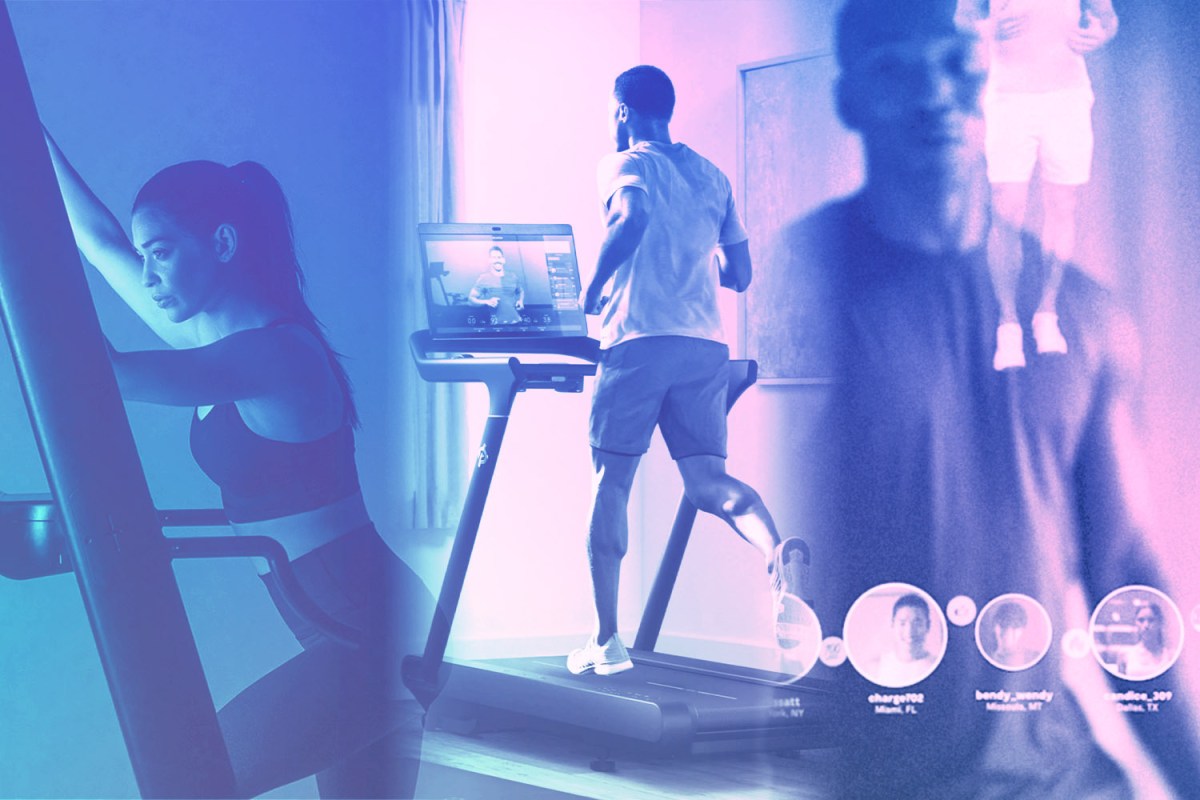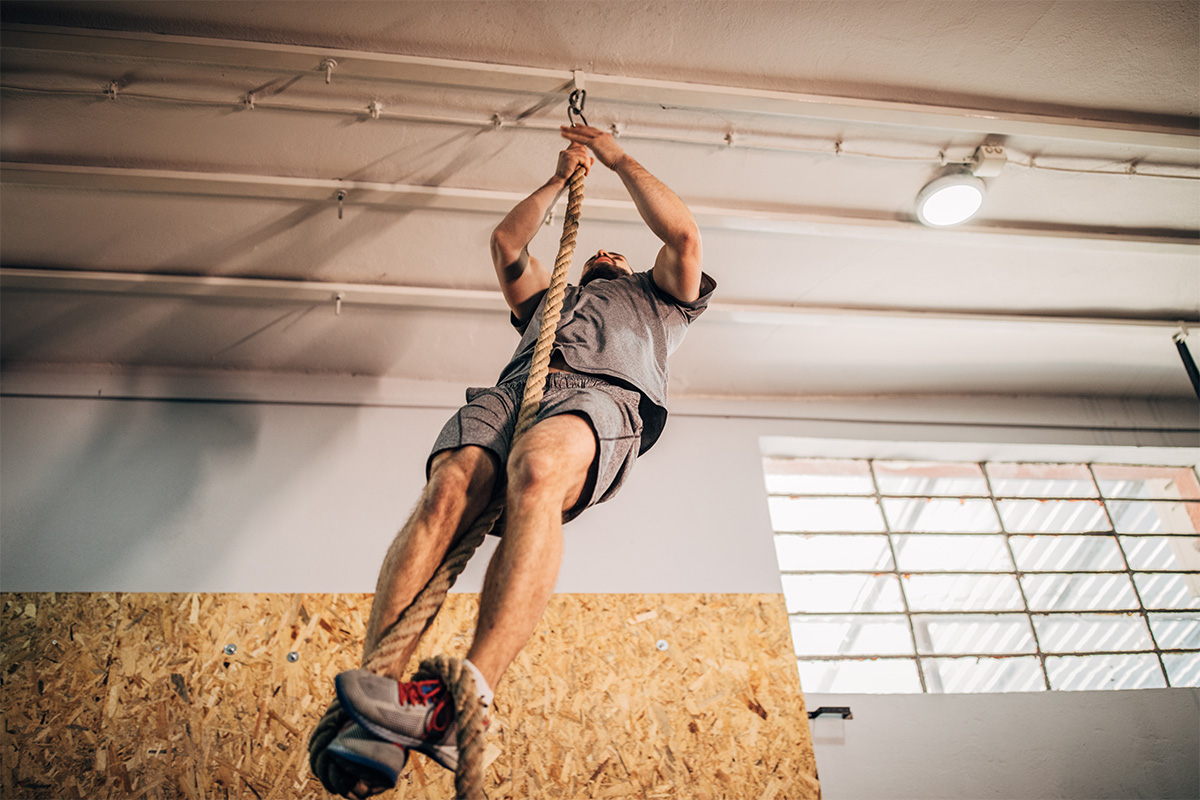Nota bene: If you buy through the links in this article, we may earn a small share of the profits.
Toward the end of 2018, a company called MIRROR released a business wire to announce it had secured $13 million in financing. The release included a few choice quotes from Brynn Putnam — the erstwhile New York ballet dancer who invented the sleek fitness system — before concluding, optimistically, that the brand was well-positioned for a successful future. The lines are somewhat amusing to look back on and read now, after the pandemic changed everything.
The brief reads: “Meanwhile, 70% of exercisers still work out at home. This sharp rise in specialized fitness and the scale of the at-home market points to this generation’s need for variety and personalization without sacrifice for convenience.”
It’s strange to consider that even before the pandemic, the overwhelming majority of Americans were already exercising at home. But it was only recently — coincidentally, just before the onset of COVID-19 — that clever “fitness tech” companies decided they might as well go ahead and refresh the entire industry.
Hellbent on improving the aesthetics and ergonomics of clunky, plastic, destined-for-dust equipment, and inspired by the casual American exerciser’s surprising appetite for biometric data (the wearables boom was the coal-mine canary there), new brands ushered in the era of so-called “connected fitness.” Think: machines that belonged to the internet of things, capable of logging personal performance stats, streaming on-demand workouts and bringing a personal trainer straight into your living room.
Now over four years later, there’s a huge number of brands getting in on the action. Peloton is the one that comes to mind first, of course, but that’s just the tip of the iceberg. Thus, we’ve compiled an exhaustive guide to modern, high-end home fitness machines — including stationary bikes, yes, but also treadmills, boxing setups, rowers and touchscreen trainers like MIRROR.
BIKING
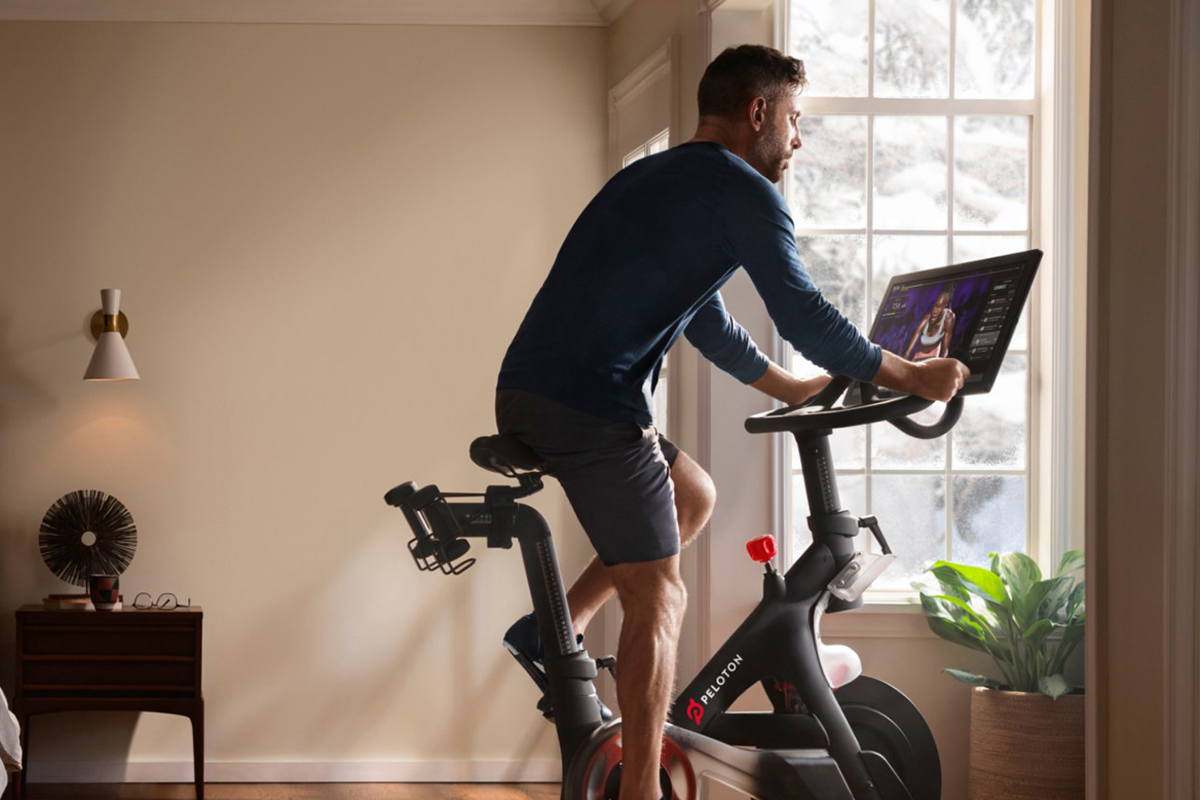
Peloton Bike
Year Launched: 2013
The Chatter: The undisputed face of the current at-home fitness revolution. Peloton’s first stationary bicycle actually came out back in 2014, if you can believe that, and it spent the pre-COVID years building a base of loyal fans. Diehards love its sleek, compact design and stable of streamed classes taught by familiar instructors (many of whom have gone on to become celebrity trainers).
With September’s release of the Bike+, which has an 23.8-inch HD swivel screen, Peloton hopes to make the leap from a cool-yet-unnecessary home feature to all-encompassing lifestyle brand. It goes well beyond biking — there are classes for yoga, meditation and barre, to name a few — and there’s a massive (3.1 million members strong) social element to the platform, too. For instance, users can video-chat with friends during classes. The next frontier? Music and activewear apparel. Peloton recently signed a partnership with Beyoncé (it’s no surprise Bike+ has more speakers than the previous stationary bike), while the word is out that Peloton wants to build an apparel brand to rival Lululemon.
The Cost: Bike+ sells for $2,495 (but you can currently grab it at Dick’s for $2,245). The Original Peloton Bike is $1,445 (a price drop, as a result of Bike+’s release). If you don’t have cycling shoes, that’ll be another $125 per pair. In order to fully unlock the powers of your bike — or perform a Peloton workout through your phone, tablet or TV — you’ll need the All Access Membership. It’s $39 a month. Oh, and, Peloton also sells treadmills: the Tread and Tread+. More on that in a bit.
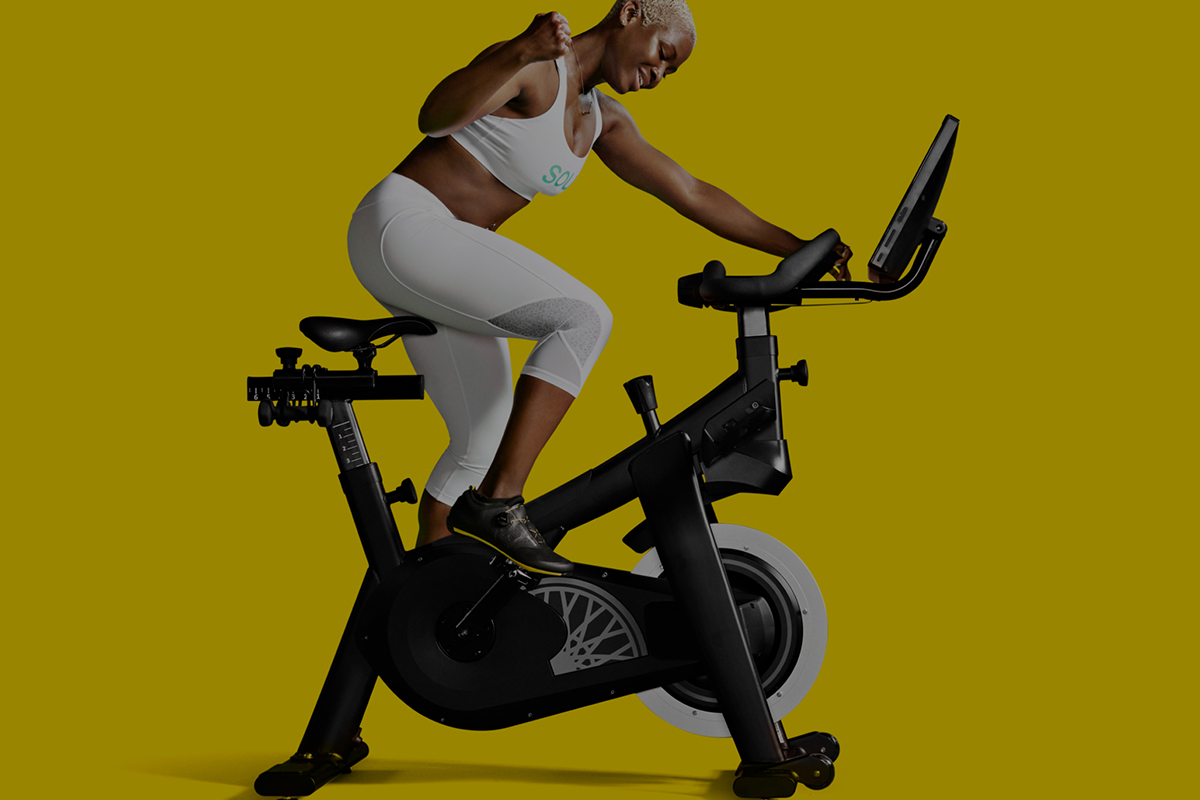
SoulCycle At-Home Bike
Year Launched: 2020
The Chatter: SoulCycle’s At-Home Bike wasn’t available nationwide until October 2020. It’s hard to blame the company, owned by Equinox Group, for not anticipating their clubs would be closed for much of 2020; after all, before the pandemic, SoulCycle owned 99 studios, and reeled in over $5,000 a year from regulars. Still, in the time it took SoulCycle to bring its connected bike to market, the brand lost SoulCycle devotees to Peloton.
The apparatus is similar to Peloton (though the screen is smaller than what you’ll find on the Bike+), and also relies on streaming classes with expert trainers. One key differentiator? SoulCycle is leveraging the full Rolodex of parent company Equinox. The bike’s accompanying app, Variis, includes workouts from Equinox, Precision Run, Pure Yoga, HeadStrong, [solidcore], TB12 and Rumble.
The Cost: The At-Home Bike costs $2,500, but is currently $600 off at Best Buy. Users are also required to commit to a one-year subscription of the Variis app membership, which is $40 a month.
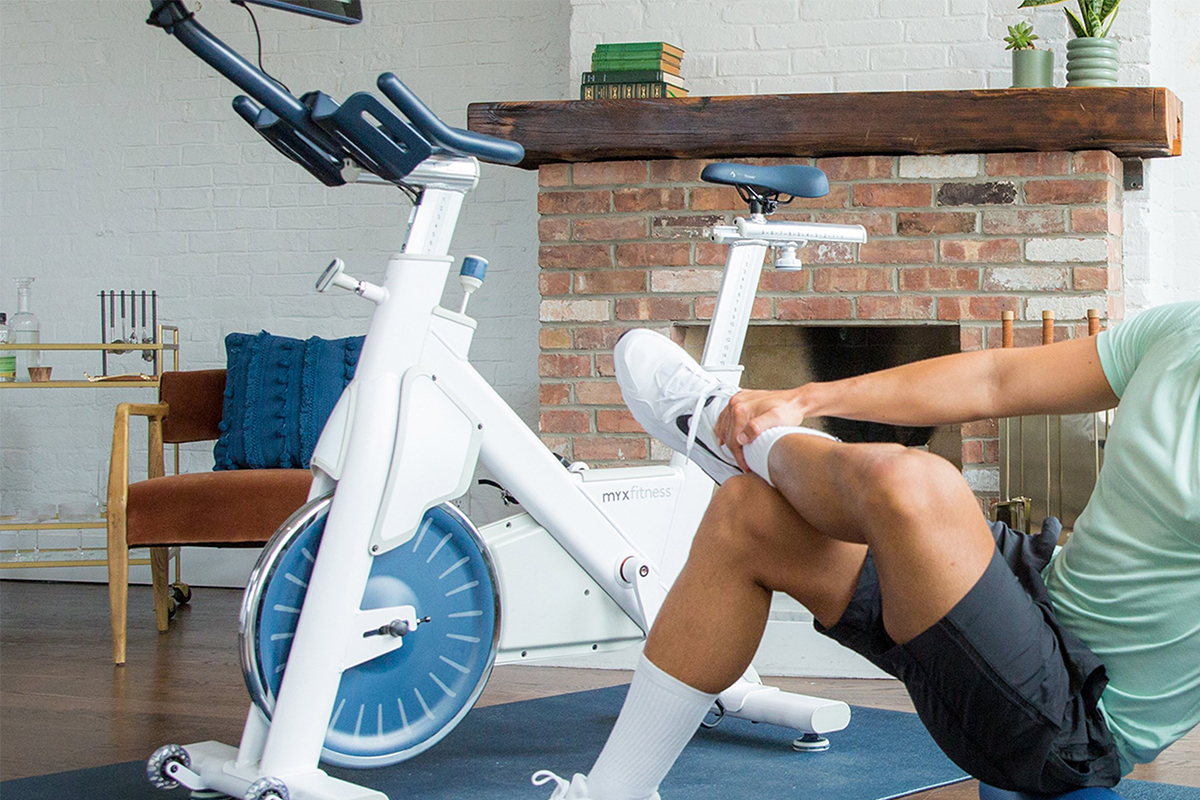
MYX Fitness
Year Launched: 2017
The Chatter: This Greenwich, Connecticut-based brand first started making waves in late 2019. Slightly different from Peloton and SoulCycle, MYX is a cross-training-centric company that makes a bike, instead of a cycling company looking to incorporate cross training. Thanks to that central ethos, cardio, resistance and recovery classes have been part of its DNA from the beginning. Cycling shoes aren’t required when using the bike, the tablet swivels 360 degrees (for easy transition to mat workouts), and the bike comes with a six-piece weight set, a kettlebell, a foam roller and resistance bands.
The drop in price (it’s a grand cheaper than the Bike+ and At-Home Bike) doesn’t come with a drop in tech. Like other connected bikes, the MYX has a team of coaches and a library of classes. There’s also a commitment to personal performance data; the bike comes with a Polar OH1 heart rate monitor, which catalogues the amount of time spent in target heart rate zones.
The Cost: The bike is $1,499, but for a limited time, you can get free shipping and assembly fees (a value of $250). Membership with the MYX App is separate, at $39 a month.
RUNNING
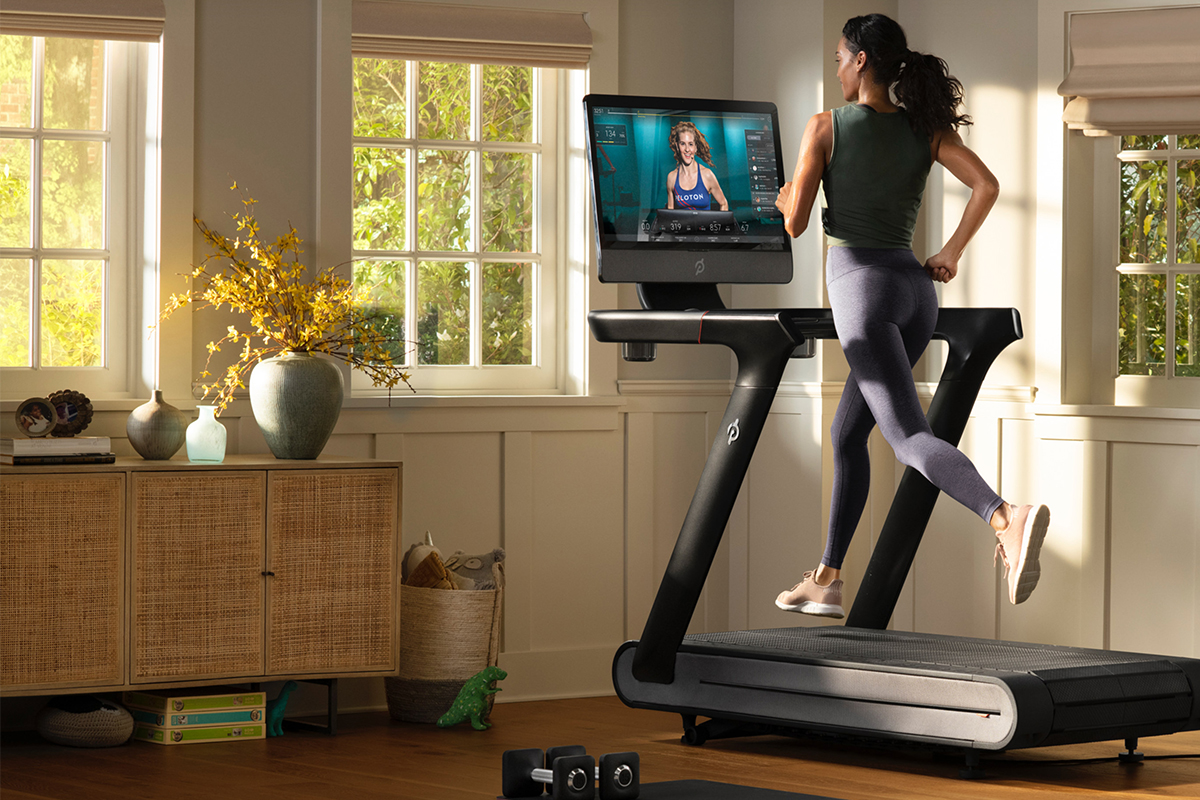
Peloton Tread+
Year Launched: 2013
The Chatter: Before the pandemic, guided running classes weren’t nearly as ubiquitous as spin classes. In New York, the city’s most popular running gym (Mile High Run Club), also claims to be its first. Many members of the running community despise treadmills and would rather train alone or join clubs that don’t mind running outside year-round. But Peloton’s Tread+, which garnered a glowing review from Runner’s World‘s “Runner-in-Chief,” Jeff Dengate, could change that by disrupting the sport’s long-tired treadmill industry.
Tread+ was released in the spring of 2019. It’s a massive piece of equipment — over six feet long and six feet tall — with, true to form for Peloton, a massive screen. Instead of a plastic dashboard with more knobs than a spaceship, the speed is controlled via suave dials mounted on the side rails. Runners are particularly impressed by the tread itself, a shock-absorbing slat belt which is easier on the knees and keeps the whole unit from shaking when you really start cooking. Like Peloton’s bikes, there are trainer-led classes (both streamed live and archived in a library) where you can test your best against other runners.
The Cost: Hefty. Tread+ costs $4,295, and that doesn’t include the cost of a Peloton membership ($39 a month). If you have a Peloton bike, though, your membership will work across two devices. There is a new model coming out in March called the Tread which will cost considerably less, at $2,495. It’ll feature the same sleek design, but will be smaller and use a more traditional (cheaper) belt.
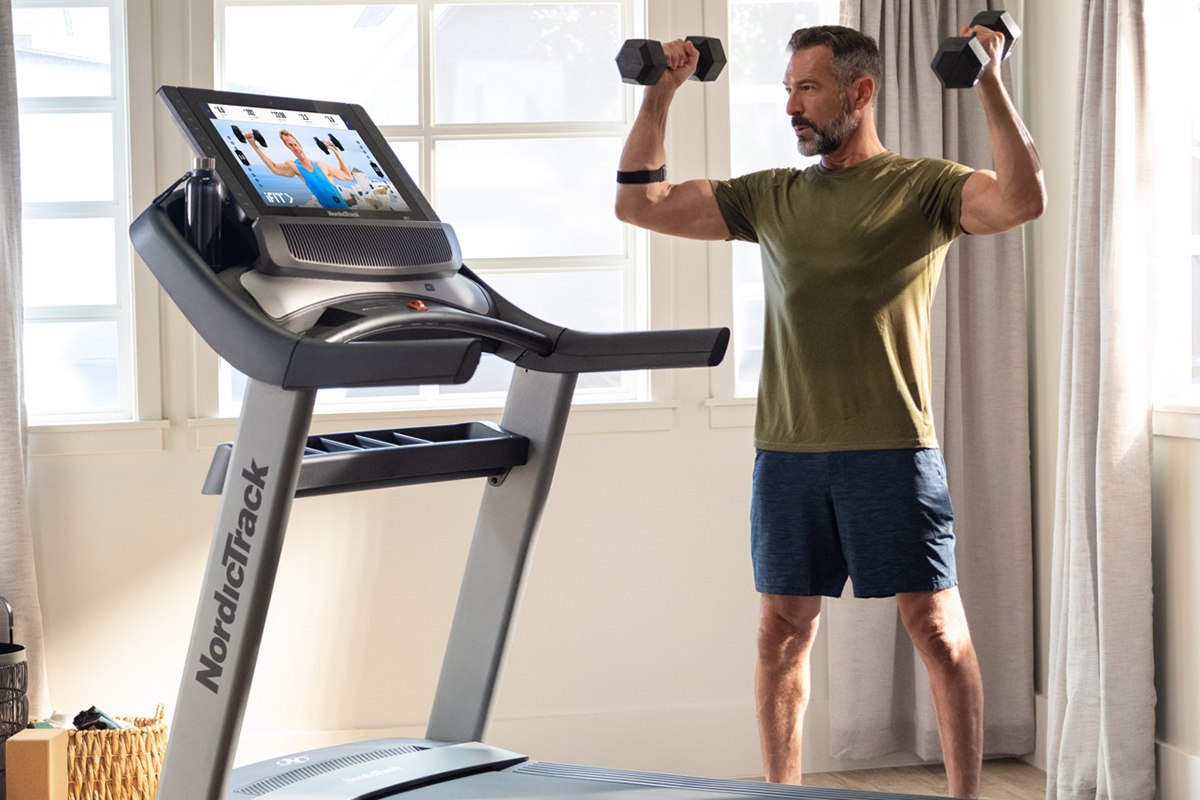
NordicTrack Commercial 2950
Year Launch: 1975
The Chatter: It’s easy to imagine a world where NordicTrack, which has been around for 45 years — or, the entirety of America’s mainstream fitness awakening — doesn’t find a way to pivot and respond to the rapidly evolving world of connected at-home equipment. But in reality, the heritage brand has done an excellent job keeping up: it currently makes well-reviewed interactive bikes, rowers and treadmills. They may not look as sexy as some of the newest brands, but thanks to decades of mastery, NordicTrack knows what it’s doing.
The Commercial 2950 is its most popular model, earning top marks from Runner’s World this year in its comprehensive treadmill rankings. The 2950 is outfitted with Bluetooth speakers, a 22′ inch screen, and fans meant to simulate the sensation of running outdoors while keeping you cool in the process. NordicTrack maintains a partnership with iFit, so you have full access to guided runs and world-class runners, some of whom will bring you on crazy trips around the world — the incline of the 2950 will automatically adjust, if, say, you’re running up a mountain in Patagonia. For the ultrarunners out there, that feature is simply impossible to beat. As with other machines here, you can use that screen to access a variety of cross-training workouts, too.
The Cost: It’s $2,999. That said, this is the rare time your purchase includes membership to the accompanying fitness app. The first year (valued at $468) is included in the cost.
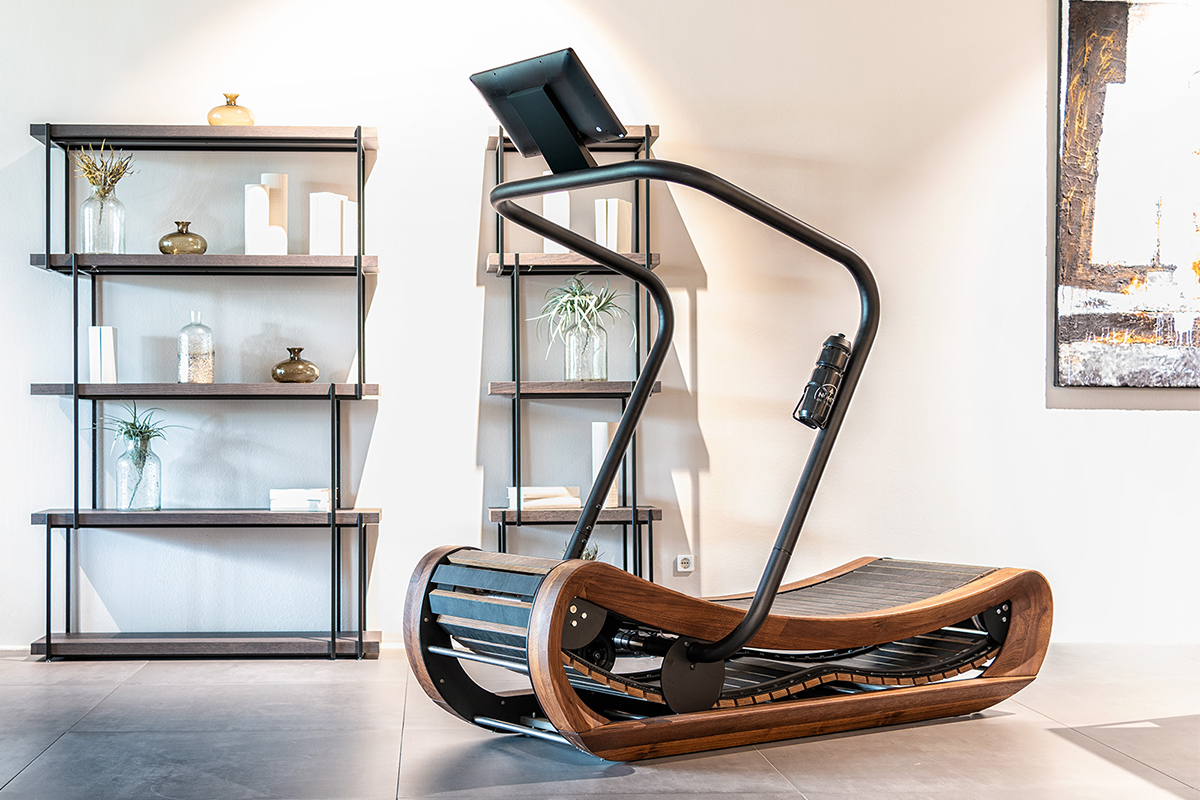
Sprintbok by NOHrD
Year Launched: 2005
The Chatter: Probably the most beautiful treadmill ever made. NOHrD is a German design and manufacturing facility that produces high-quality fitness equipment using woods like ash, cherry, oak and walnut. This is the company’s take on a “curved manual treadmill,” the phrase for motor-less machines that are fully powered by a runner’s legs. Using ball-bearing mounted slats, the treadmill belt (made from hardwood), pulls in response to someone running atop it. Like running outside, it makes for a pretty self-deterministic workout — if you run faster, the machine will go faster (and you’ll burn 30% more calories in the process).
Despite its use of wood and celebration of natural running, Sprintbok is a highly modern piece of equipment. It includes an app that tracks performance data, plus a 17″ tablet that offers access to pre-designed workouts and scenery runs.
The Cost: Unsurprisingly, at-home fitness equipment doesn’t get much more expensive than this. Sprintbok is $7,299. That’s a difficult number to swallow, especially in the warmer months, when you’d rather lace up shoes and head down the road. But if you have the space, and the cash, there isn’t a more thoughtful or attractive treadmill out there.
BOXING
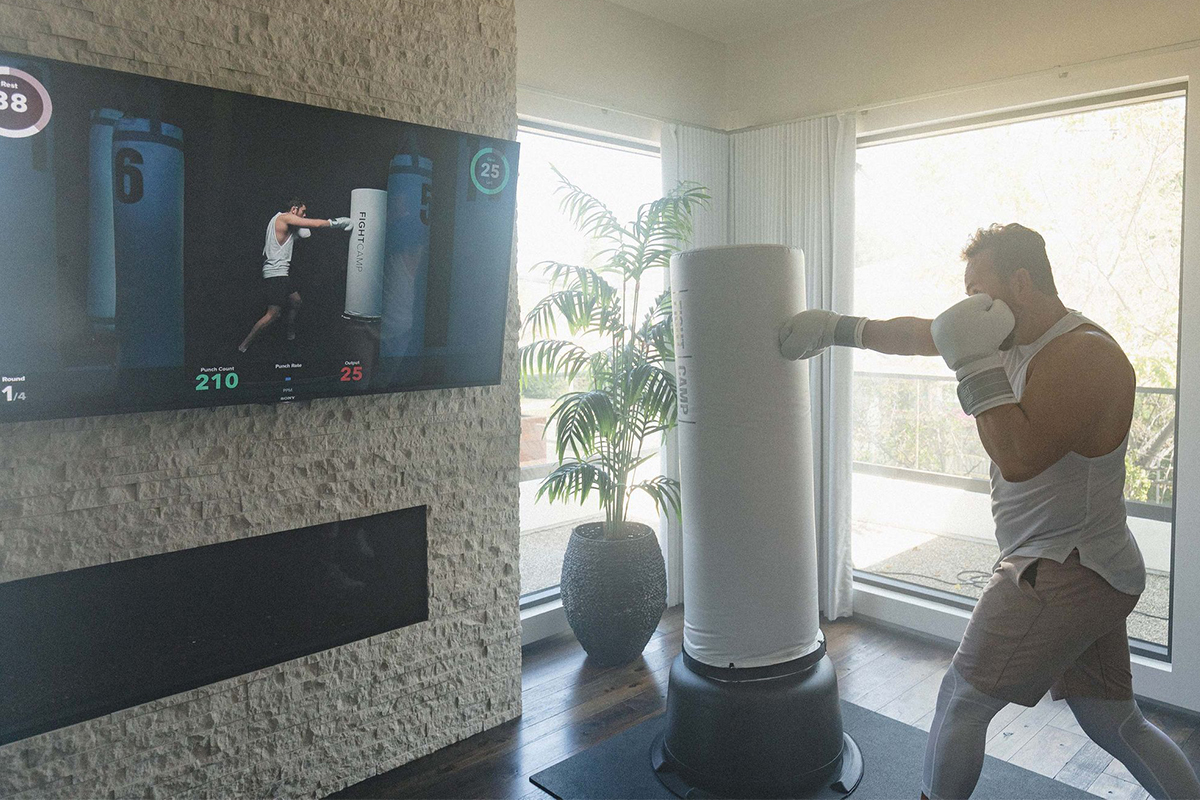
FightCamp Boxing
Year Launched: 2014
The Chatter: Earlier this year, we investigated the recent group fitness revolution, comparing it to the step aerobics booms of the ’80s. There’s far more optionality this time around, especially with the arrival of all-are-welcome boxing gyms like Rumble and Shadowbox. Each offers the calisthenics of sparring without the anxiety of actually exchanging punches.
California company FightCamp is the first to bring the connected fitness experience to boxing. Its most basic package, FightCamp Personal, includes a free-standing bag, wraps and “punch trackers.” There are more than 800 workouts, with more going up every week, to follow. During each workout, those trackers give trainees access to data on punch volume, speed and output. Similar to connected biking or running equipment, you can then cross-reference your results with the FightCamp community leaderboards. The apparatus doesn’t come with a screen, but most trainees appear to hook up the app to their TV.
The Cost: FightCamp’s Trackers + Bag package is $499. Monthly membership is $39, though you can create unlimited profiles for your household.

Liteboxer
Year Launched: 2016
The Chatter: New from a Boston-based consumer electronics brand, Liteboxer only began shipping this past August. Instead of a free-standing bag, Liteboxer is built around a light-up sensor pad that blinks periodically throughout the course of a workout, a la whack-a-mole. Thanks to some patented tech, those lights beam in tune to the beat, forcing users to perfect their boxing rhythm.
That means it’s possible to just queue up a couple of songs and work up a quick sweat, or commit to a full-on, 45-minute workout (possibly hosted by a former US heavyweight — Liteboxer sourced some big-time trainers). This is the gamification of connected fitness equipment in its purest form; the bright minds at Liteboxer are relying on the fun factor — dance around and hit stuff — to fuel positive reviews. A couple important notes: like FightCamp, Liteboxer does not come with a screen. You’ll need to stream the workout via your phone or tablet. And unlike FightCamp, you can’t do a kickboxing workout with Liteboxer.
The Cost: The unit is $1,295 … assuming you’re 6’1″ or shorter. Taller boxers need to pick up the “extended” apparatus, which is $300 more expensive. Membership is $29 a month, meanwhile, but the first three months are free. However, you can currently save $500 on both the Liteboxer Floor Stand Starter and Liteboxer Wall Mount.
ROWING
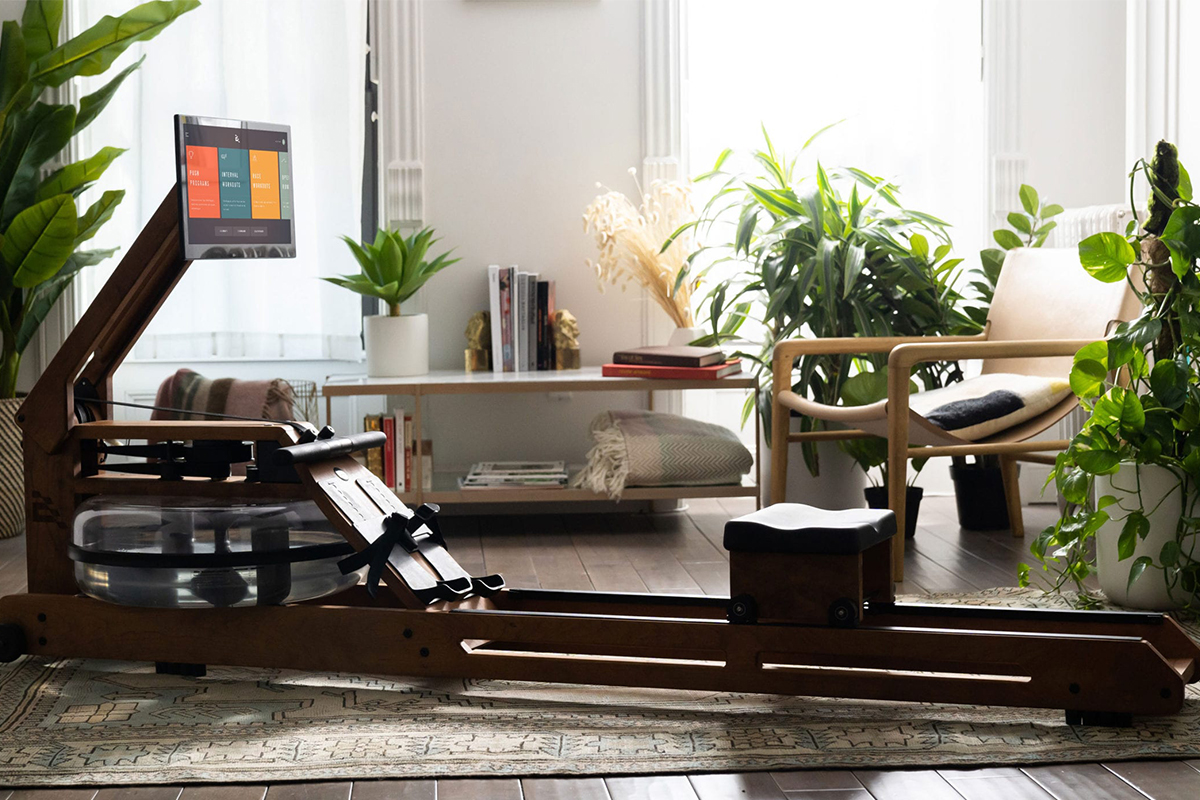
The Ergatta Rower
Year Launched: 2020
The Chatter: Similar to the Sprintbok treadmill, The Ergatta Rower combines new-age tech with gorgeous craftsmanship. A rower is always a clunky piece of equipment in a house, but it’s a bit easier to make room when the thing features a glass tank and polished cherry wood — little wonder that Williamsburg-based Ergatta reportedly wanted its ergometer to resemble furniture.
The rower officially dropped in March 2020 (talk about timing), and is more than just a pretty sight. It takes a different, arguably more clever approach to connected fitness, by offering games instead of classes. Rowers can access hundreds of pre-loaded games — individual challenges, races on the open water — which play out in colorful lines across a slick black background. For those who didn’t row crew in college (which would include Ergatta’s own founders), the hope is this might remove some of the intimidation factor and make the machine feel more like a handsome arcade game than a piece of training equipment for a very specific sport.
The Cost: The machine costs $2,499, shipping costs $199, and a monthly membership costs $29.
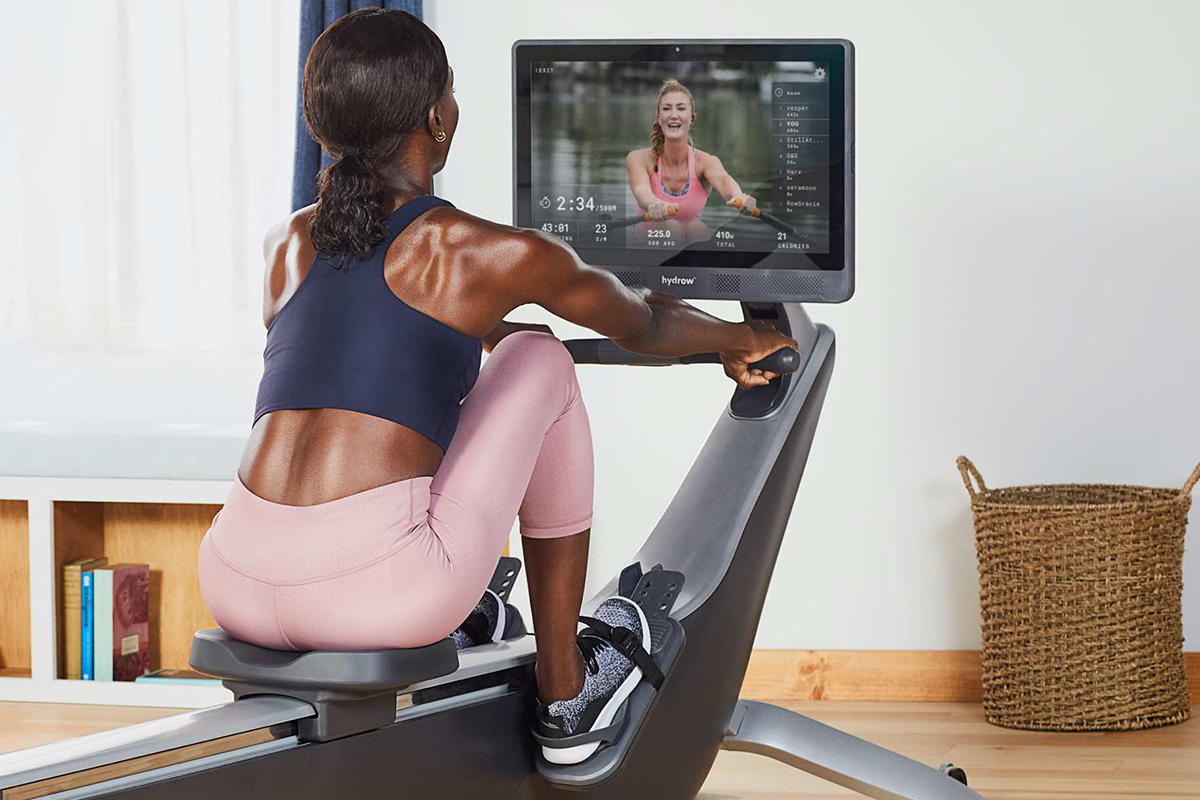
Hydrow
Year Launched: 2017
The Chatter: If Ergatta was conceived by rowing-adjacent aesthetes, Hydrow is one from the sport’s diehards. It’s operated (where else?) out of Cambridge, Massachusetts, and classes are led live on real rivers from London to San Francisco by athletes with National Rowing team experience. Hydrow wants to embrace the heritage of its sport — which, admittedly, can feel far away on an erg in the corner of a room, and especially during high-intensity rowing class at a place like CITYROW. But at the same time, the brand also wants to rip away some of the sport’s old-school elitism, and spread the good word that rowing is a dynamite full-body exercise capable of working out 86% of the muscles in your body.
How’s all that going? Pretty well, thus far. A 22” touchscreen “brings the river to your living room,” while an electromagnetic drag mechanism aims to mimic the feel of the water. Hydrow was named one of Time Magazine’s 100 Best Inventions of 2020, and to help get the word out, Kevin Hart was recently hired as a Creative Director for the brand. His official tag is “HustleHart,” and he apparently can’t get enough of his Hydrow, so don’t be surprised if you run into him during a workout.
The Cost: The Hydrow recently dipped to $2,245, thanks to a huge New Year Deal. If you’re willing to pay more — up to $450 more — you can also bring home a machine mat, heart rate monitor, headphones, yoga blocks, foam roller, and resistance bands. Shipping is free. The monthly membership is $38.
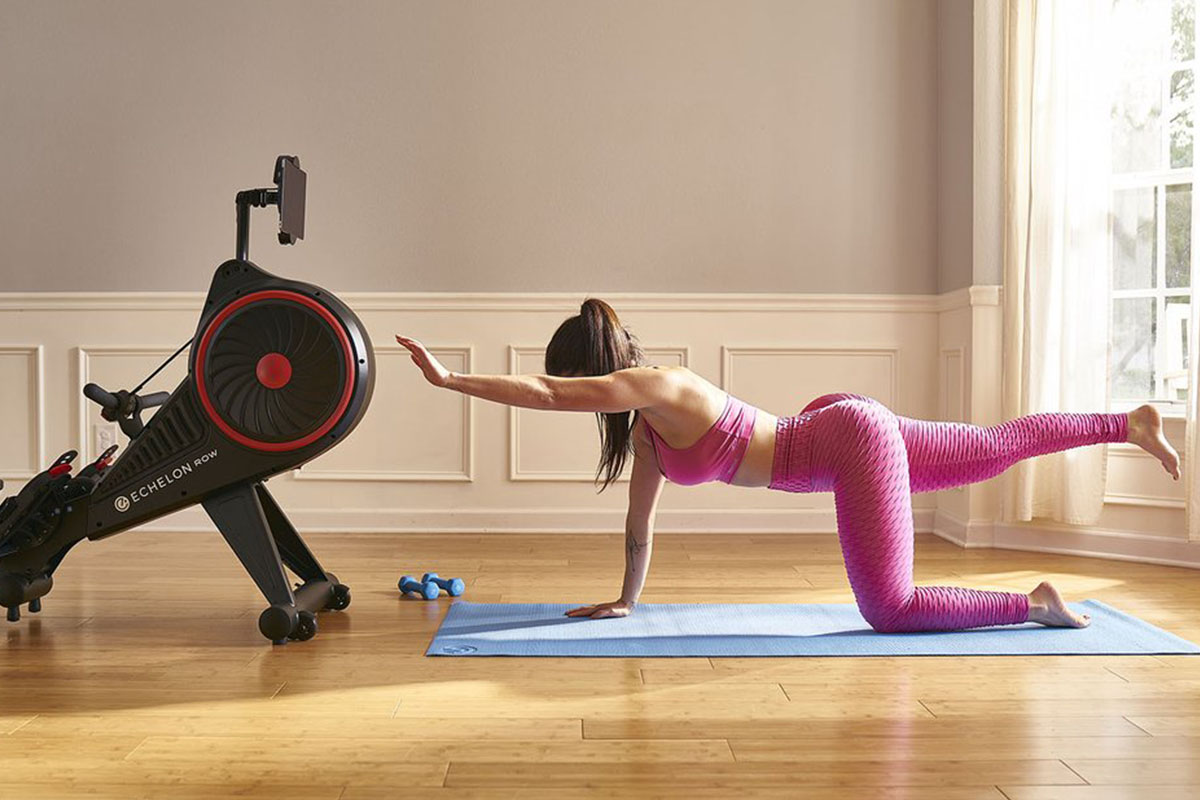
Echelon Fit Smart Rower
Year Launched: 2017
The Chatter: Echelon is all in on connected fitness equipment. The brand makes four different connected bikes, a treadmill (called the Echelon Stride), two touch-screen workout mirrors and now a pair of smart rowers. Ultimately — thanks to swivel screens and libraries packed with classes — all the above are designed to allow for cross-training opportunities. It’s just your prerogative what sort of training you’d like available most of the time, be it cycling, running or rowing.
Echelon’s equipment isn’t quite as attractive as offerings from Peloton or Hydrow, but it also isn’t as expensive. Echelon set out to make interactive streaming equipment for less, and it’s accomplished that without sacrificing on performance. The Row-s impressed the right people when it dropped at CES earlier this year; with its HD screen and handy resistance controls, it’s still miles better than the rowing machines we’ve used for years. The same can be said for Echelon’s other connected equipment.
The Cost: The Echelon Row is $1,000, but now discounted to $770. One thing to keep in mind, though — Echelon may be betting on the long-term cashflow from users subscribing to its app, which is essentially identical to Peloton and Hydrow, at $38 a month. Still, the base costs for its equipment is definitely cheaper.
TRAINING
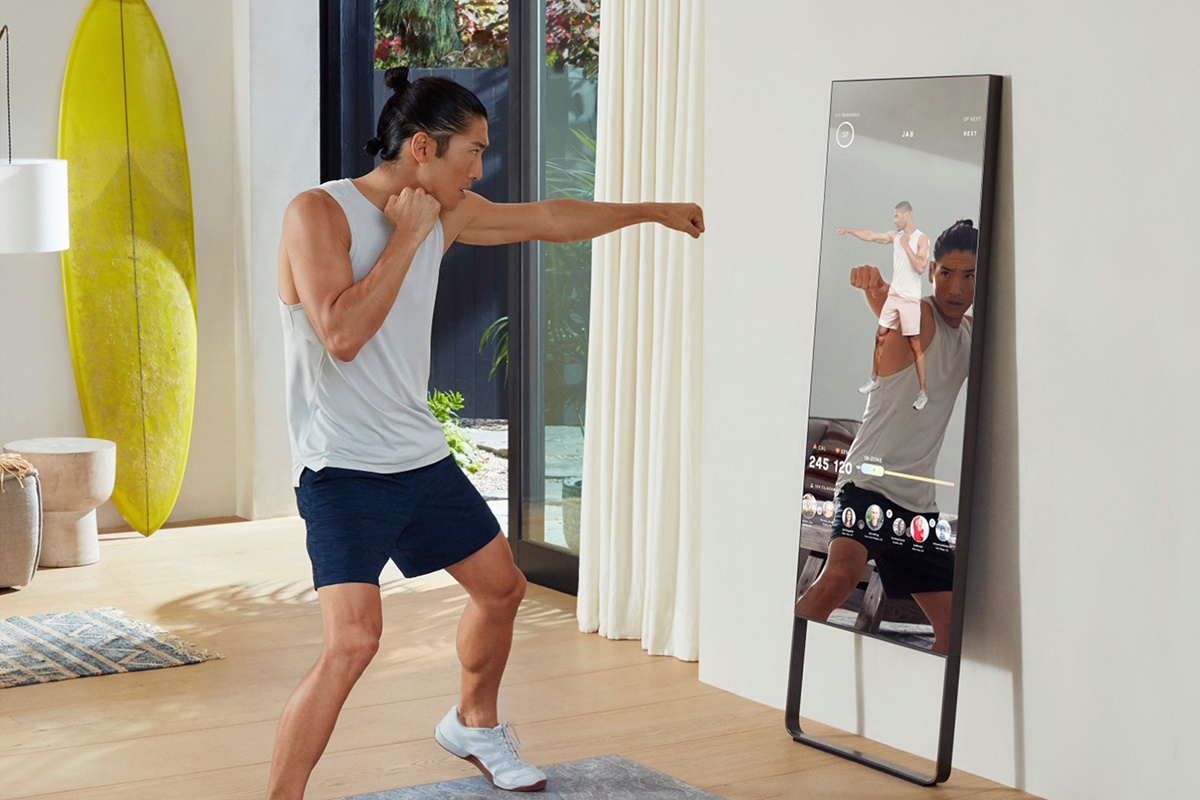
MIRROR
Year Launch: 2016
The Chatter: The hottest name in connected fitness right now, aside from Peloton at least, is MIRROR. Similar to the revolutionary stationary bike, it has catalyzed its own copycat industry of four-foot-tall rectangular touchscreens, in front of which trainees can hop, punch and push-up their way to fitness glory. Less than two years after bringing its first screen to market, MIRROR was purchased by Lululemon for $500 million.
Obviously, MIRROR doesn’t feature a core machine, like a bike or erg. But it’s telling that the screens on bikes and ergs keep getting bigger. That massive display — which can be hung from the wall, or propped against it with a stand — has been so popular because it looks stunning when not in use, and is highly effective when it is in use. As anyone who has hunched over a phone or laptop for workouts during the pandemic (or tried to hook one up to the TV) can attest, having a clear, giant screen at eye-level is a game changer. The Mirror App includes just about any fitness class you can think of — from boxing to Latin Dance — and catalogues your biometrics data in order to track progress.
The Cost: MIRROR is usually $1,495, but thanks to a clutch New Year deal (use code NEWYEARS23), you can get the apparatus for $795. Membership is $39 a month. Oh, and, because each MIRROR is equipped with speakers and a camera, it’s also possible to bring a personal trainer into your home. It costs $40 for each 30-minute session.
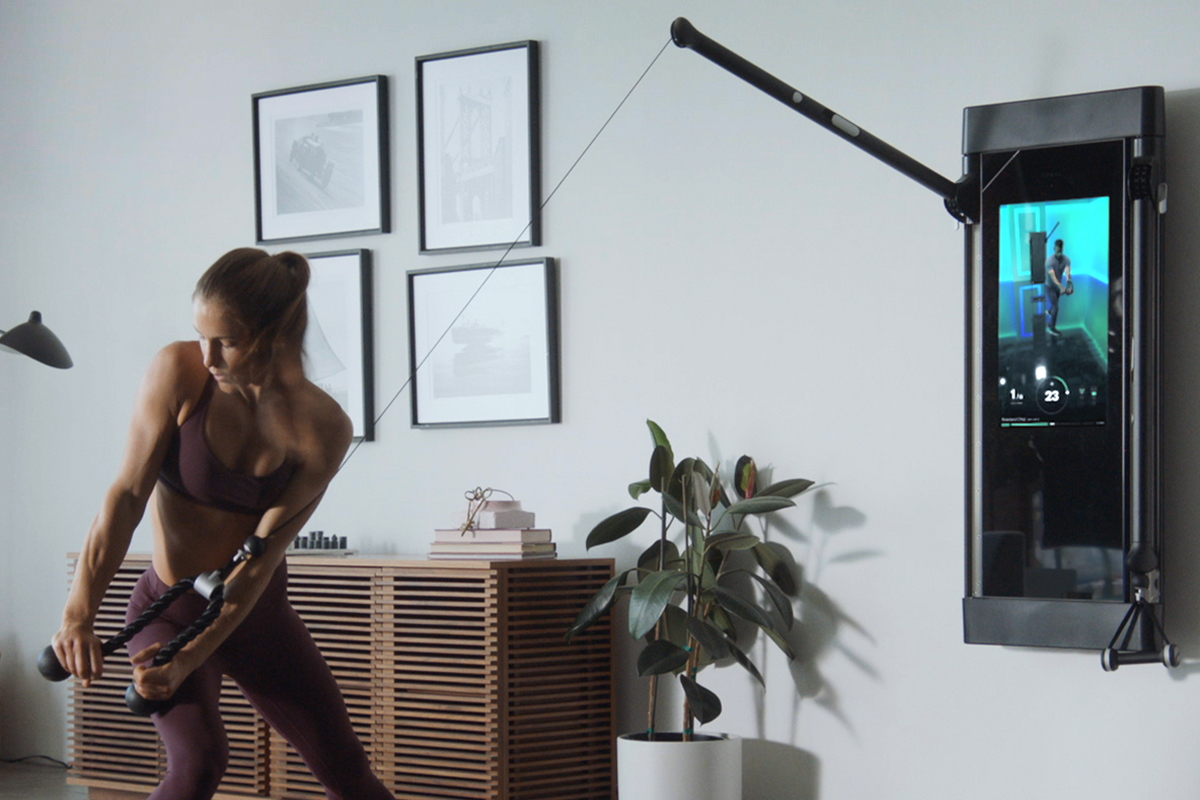
Tonal
Year Launched: 2015
The Chatter: In the wake of MIRROR’s success, other fledgling brands have come to the fore with “similar to MIRROR but different, somehow” business plans. For Tonal, a San Francisco-based tech fitness brand — which secured $110 million in its latest round of investments — that meant outfitting the MIRROR with a pair of limbs. Tonal is an interactive touchscreen with two adjustable arms designed to give you a top-notch strength training workout. The technology is pretty amazing. Inside the Tonal, which is lighter than a flatscreen TV, there’s an electromagnetic system that creates resistance tailored precisely to A) your base-level of strength (you have to take a test at the beginning), and B) how you’re progressing in training. It can accommodate up to 200 pounds of resistance at a time.
The machine is meant for both upper- and lower-body strength training, and comes with a variety of accessories, like handles, a bar, ropes and a bench. The handles and bar are actually “smart,” which allows the AI to track each rep. On-demand workouts last up to 45 minutes and there are hundreds to choose from, but unlike other connected fitness equipment, Tonal doesn’t do live classes. Some have pointed out that this makes the content seem stale over time. That said, there is a “Free Lift” feature, which allows you to do lat pull-downs, bicep curls and deadlifts to your heart’s delight — and you can crank some music while doing so thanks to the machine’s Apple Music plug-in.
The Cost: A lot. Of the “mainstream” connected fitness machines, Tonal is one of the most expensive. A Tonal with all smart accessories costs $3,990. The monthly membership is $49. The brand says delivery will currently take 1-3 weeks after purchase.
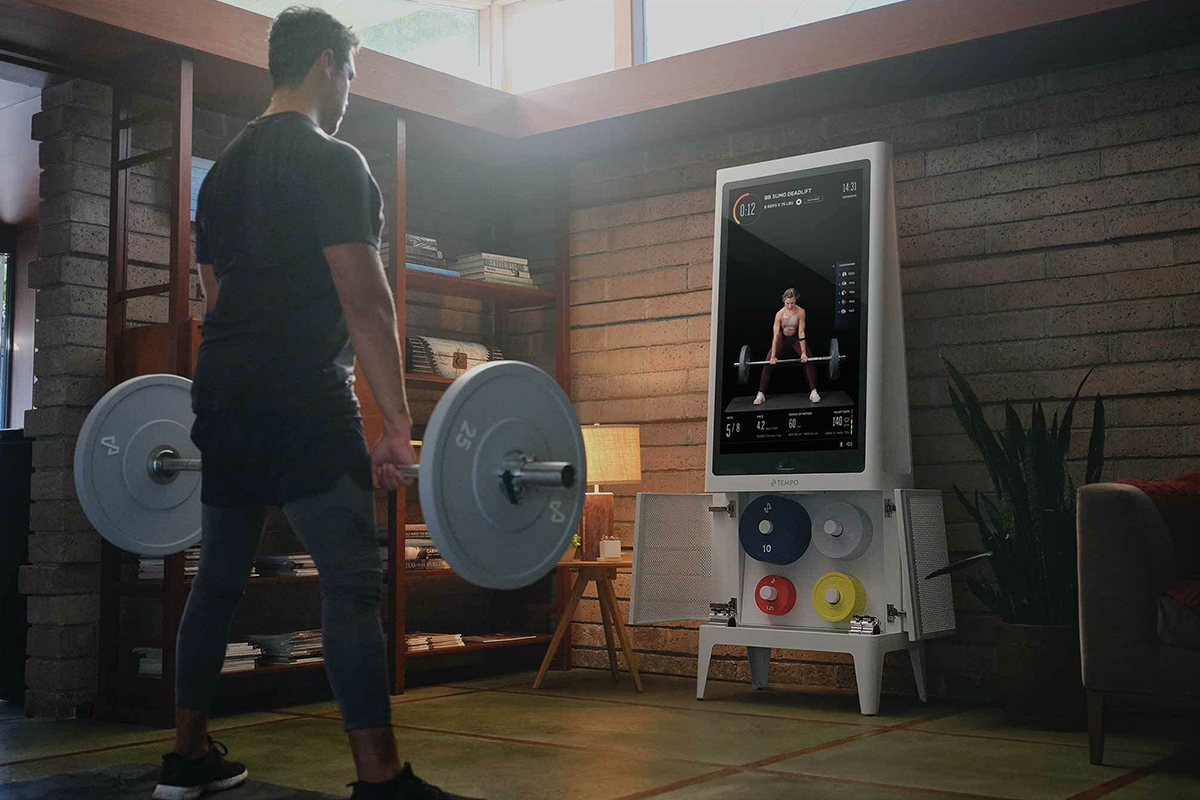
Tempo
Year Launched: 2020
The Chatter: A complaint many have lodged about self-guided, at-home fitness classes is there’s no professional there to fix your form. It’s understandably difficult to always keep your posterior chain aligned, or your knees from slipping past your toes, when you’re trying to bang out a couple more reps and finish a workout. That’s where having a trainer there — to emphasize patience and levy some expertise — can be crucial. Tempo, another San Francisco company with a big strength-training touchscreen, built its brand around making sure form gets its due in people’s living rooms.
Each Tempo Studio comes with a six-foot-tall display, 16 plates of various weights and three barbells, among other accessories. When you work out with Tempo, it utilizes some truly mind-blowing three-dimensional infrared tech to map out a pixellated rendering of every repetition you do. Based on how you lift the bar, it provides immediate feedback on the quality of your rep. Over time, the idea is for you to master proper form — and lift more. Tempo also keeps track of how much you’ve been lifting. If that sounds too complicated, Tempo offers live classes, during which private trainers can take note of your form and offer expert guidance.
The Cost: Tempo is surprisingly affordable. Well … “affordable” in the connected fitness world, at least. It costs $2,495 (currently $1,695). The fact that the weights are included in that cost is a big deal. Once you start to get stronger, you can buy heavier plates (25 pounds, 45 pounds) directly from Tempo for up to $265 per set of two. Considering how difficult it is to find weights these days, that’s a pretty reliable plug. The all-inclusive membership is standard fare, at $39 per month.
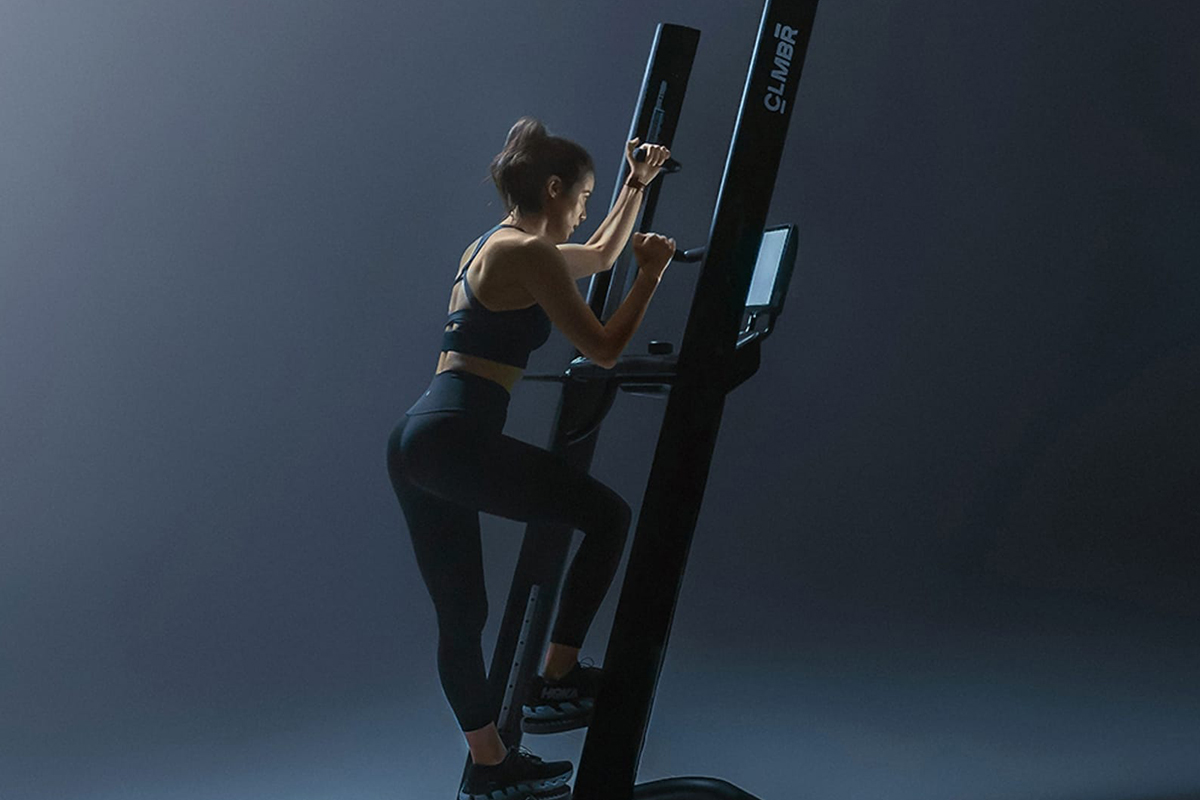
CLMBR
Year Launch: 2019
The Chatter: CLMBR represents the natural next frontier in connected fitness: highly specialized equipment for any activity that hasn’t yet gotten the royal treatment yet. In this case, it’s the first-ever connected at-home climber. CLMBR really went for it on its brand tag (“Where primal movement meets state-of-the-art design”), but it makes a fair point. Our bodies are built for climbing. It’s one of the most effective full-body workouts you can possibly do, a perfect blend of cardio and strength training. We know that hanging from a pull-up bar once in a while is an antidote for tech neck and rounded shoulders. And concerted climbing — without the tedium of joining a climbing gym or driving to cliff faces — could be a miracle calorie-burning machine, too.
CLMBR claims its workouts will help you burn 60% more calories than you would running or cycling. It’s a little too early to tell, but the industry is also impressed by some thoughtful specs, including Kevlar-reinforced belts and a more ergonomic design than every other climbing machine invented before it (which used a meddlesome central shaft). CLMBR also features an on-demand library with different instructors to guide you through a session and elevation charts that track your climb.
The Cost: For $2,795, you’ll get the CLMBER Connected 02 and a free 30-day premium membership. All purchases include a 12-month limited warranty and memberships start at $40/month.
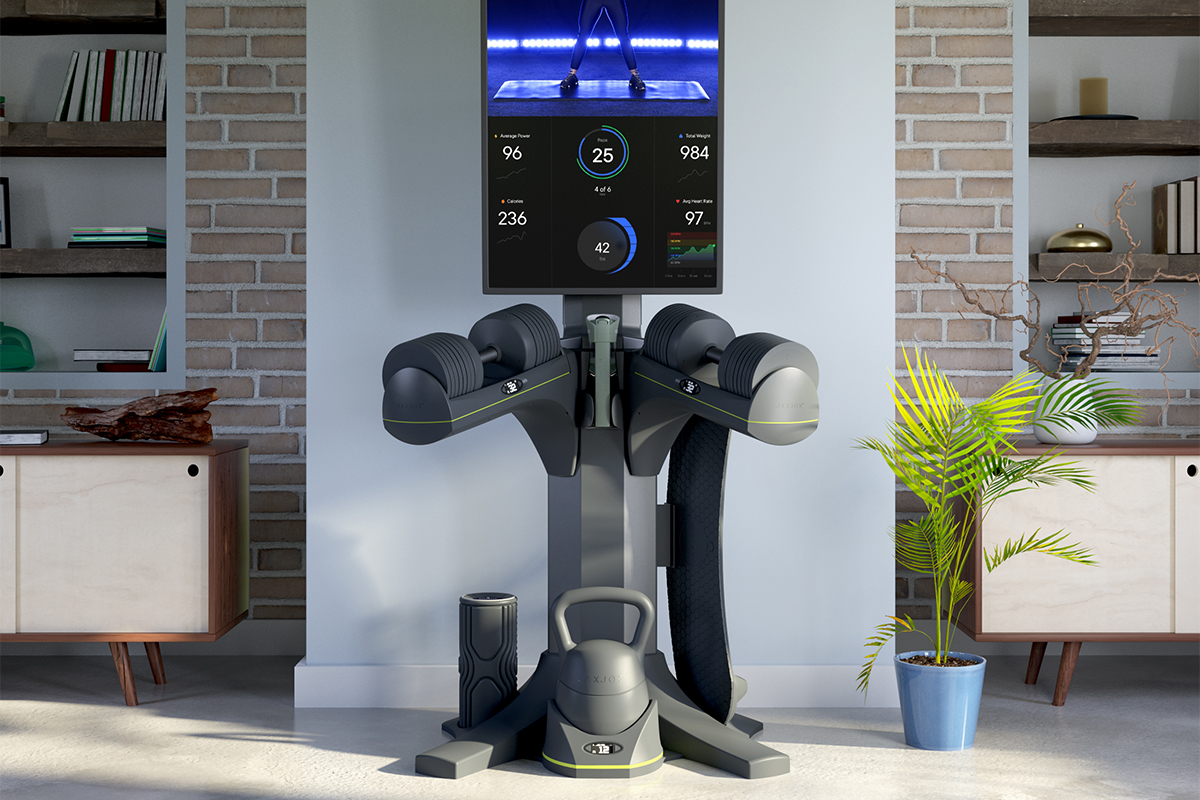
JAXJOX
Year Launch: 2016
The Chatter: In a way, this new wave of home gyms has already come full circle. The initial appeal of a product like MIRROR — it doesn’t look like a gym, it doesn’t need any additional equipment — has paved the way back to setups with various weights and tools that don’t seamlessly blend into a room in the middle of the house. To be clear, this isn’t a bad thing. It’s just fascinating. JAXJOX is a perfect example. The Washington state company is now centralizing its supply of adjustable, AI-powered weights (headlined by a beloved, high-tech kettlebell) under the umbrella of one at-home fitness tower, complete with a 43″ touchscreen.
JAXJOX’s products are useful even when they’re not part of a connected studio. That digital kettlebell, for instance, contains the weight options of six different kettlebells. The dumbbell accounts for 15. You can buy these products separately, but JAXJOX is hoping you’ll commit to the full thing, which neatly displays (on a screen that can be raised, lowered or even twisted 360-degrees) and tracks performance data each time you take a class or lift in your own time.
The Cost: The total cost of the JAXJOX is $2,499 and the monthly membership costs $39.
We've put in the work researching, reviewing and rounding up all the shirts, jackets, shoes and accessories you'll need this season, whether it's for yourself or for gifting purposes. Sign up here for weekly style inspo direct to your inbox.
